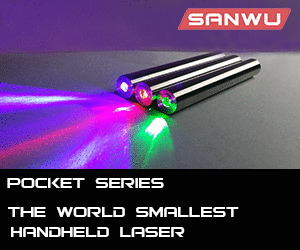- Joined
- Dec 23, 2008
- Messages
- 3,948
- Points
- 63
the 635's get away from 635nm really quick. there isn't much of a power band that can still lase at 635.
michael
michael

Follow along with the video below to see how to install our site as a web app on your home screen.
Note: This feature may not be available in some browsers.



thats a nifty program rhd...it gives a good way to calculate apparent brightness. it seems a 300mw 660nm laser would be much brighter than my 800mw 405... by a lot too. thats cool nice work. +1 for that
It says 150mW of 635 should be brighter than 200mW of 642
I think I may try mine at 250mA, and at 320mA, and see which seems brighter
A 170mw 637 would actually be much brighter than a 200mW 642 (if it really reached 642) Beam: (642nm 200mw) vs. (637nm 170mw) However, that just wasn't the case. The 200mW was noticeably brighter than the 170mW power range.
Coupled with my observation that this just doesn't produce much (any) measurable heat in a few minutes of use, and the fact that most datasheets correlate wavelength to temperature not mW optical output, I've come to the conclusion that it isn't shifting wavelengths much (if at all) based on my use.

